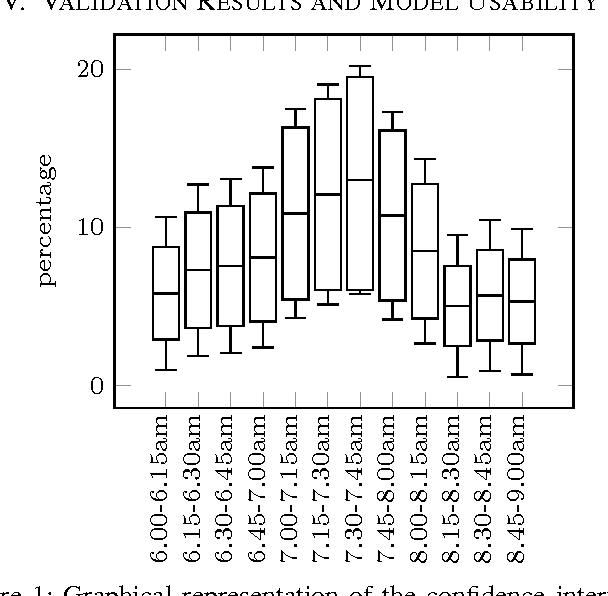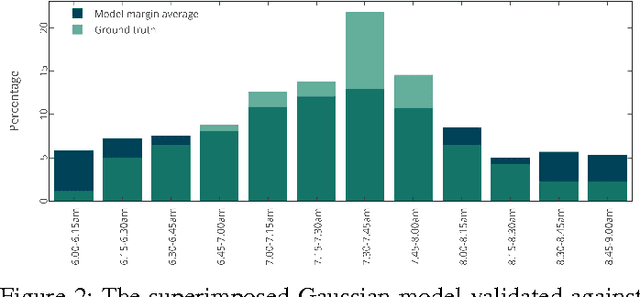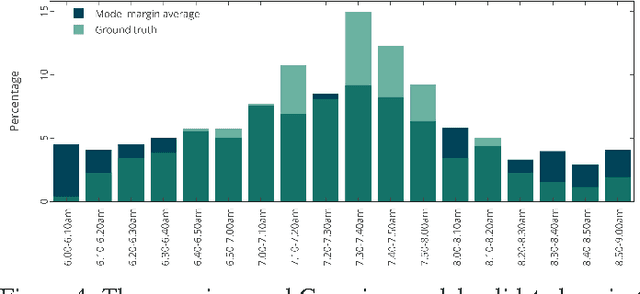Ilya Dianov
Towards Predicting First Daily Departure Times: a Gaussian Modeling Approach for Load Shift Forecasting
Jul 16, 2015



Abstract:This work provides two statistical Gaussian forecasting methods for predicting First Daily Departure Times (FDDTs) of everyday use electric vehicles. This is important in smart grid applications to understand disconnection times of such mobile storage units, for instance to forecast storage of non dispatchable loads (e.g. wind and solar power). We provide a review of the relevant state-of-the-art driving behavior features towards FDDT prediction, to then propose an approximated Gaussian method which qualitatively forecasts how many vehicles will depart within a given time frame, by assuming that departure times follow a normal distribution. This method considers sampling sessions as Poisson distributions which are superimposed to obtain a single approximated Gaussian model. Given the Gaussian distribution assumption of the departure times, we also model the problem with Gaussian Mixture Models (GMM), in which the priorly set number of clusters represents the desired time granularity. Evaluation has proven that for the dataset tested, low error and high confidence ($\approx 95\%$) is possible for 15 and 10 minute intervals, and that GMM outperforms traditional modeling but is less generalizable across datasets, as it is a closer fit to the sampling data. Conclusively we discuss future possibilities and practical applications of the discussed model.
 Add to Chrome
Add to Chrome Add to Firefox
Add to Firefox Add to Edge
Add to Edge